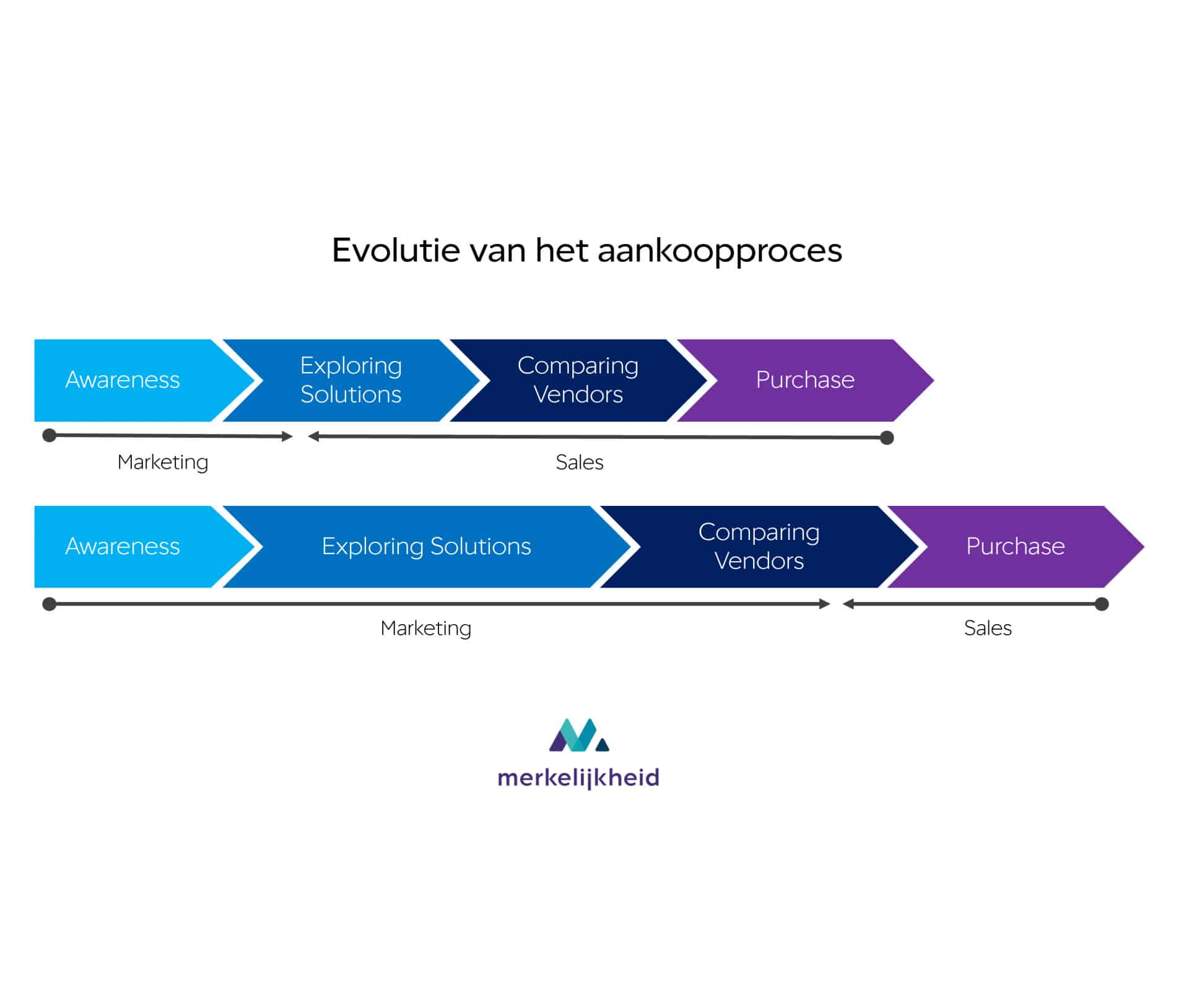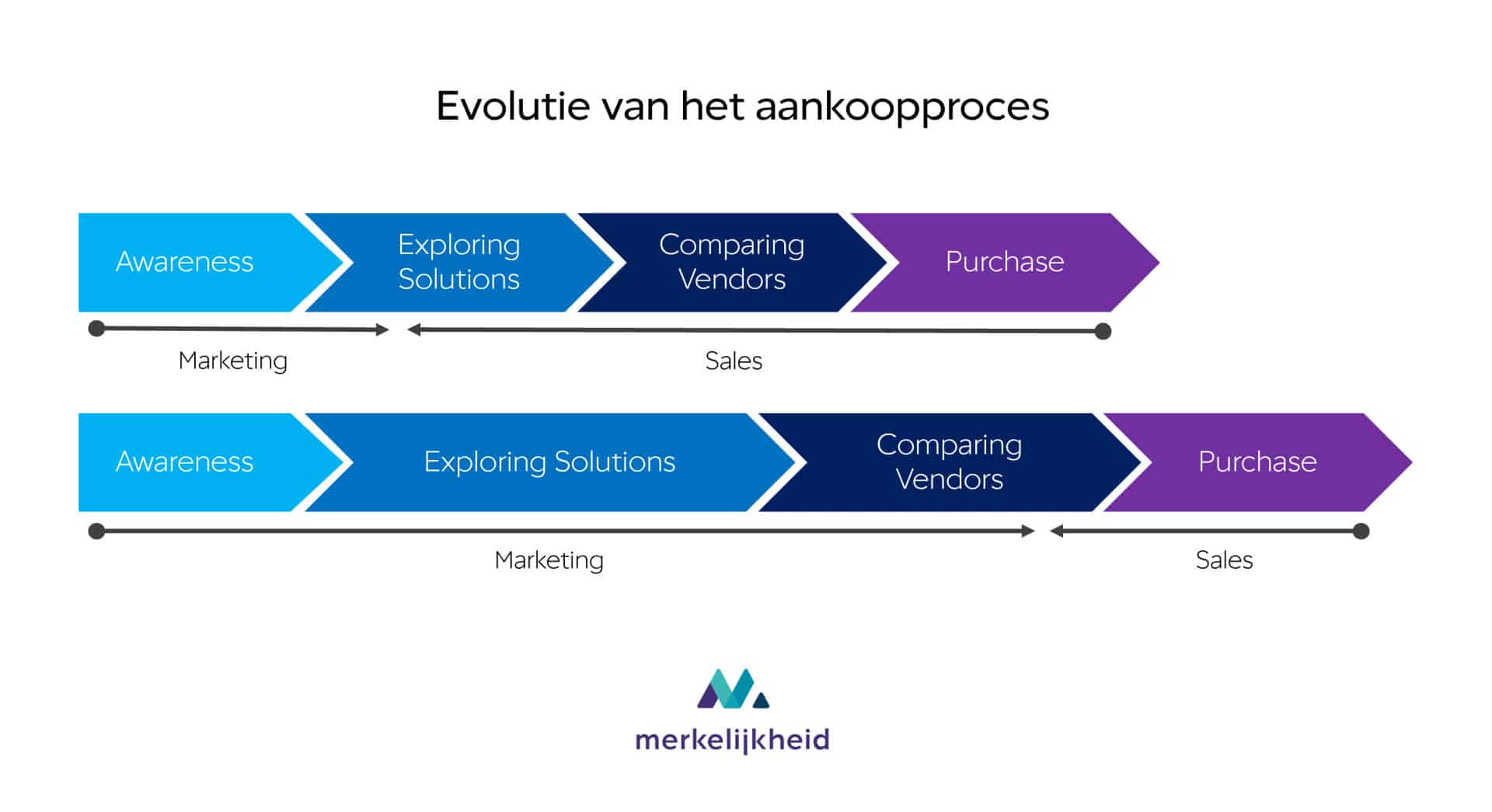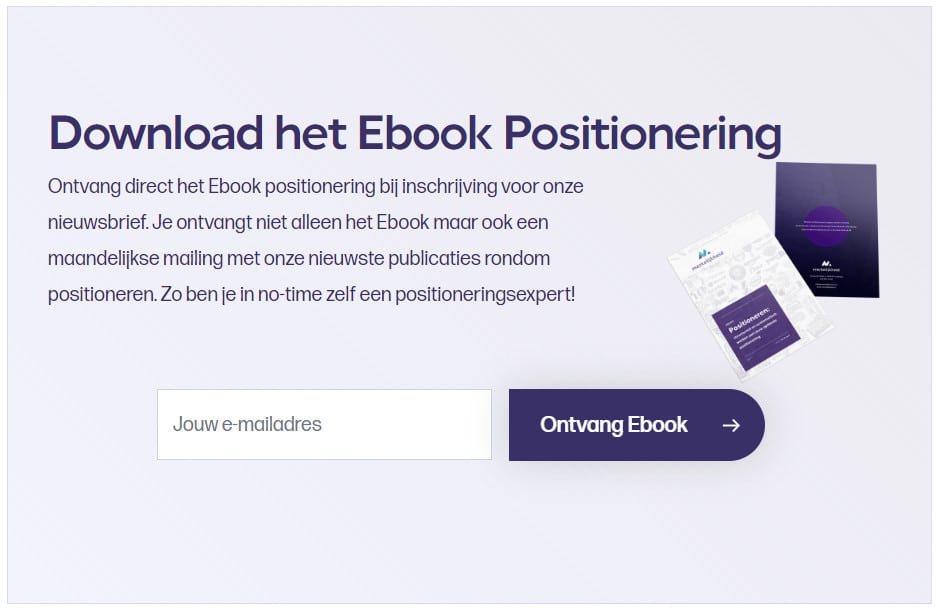Lead generation: Indispensable Building Block for Growth

Implementing Lead Generation
Implementing lead generation is becoming increasingly important. Over the past decade, we’ve observed a shift in many companies’ target audiences. Shortlists are now often made based on online research rather than visits to trade shows, browsing catalogs, or random encounters with salespeople. This doesn’t mean the role of sales has diminished, don’t get me wrong, but it has changed.
Where thousands of salespeople once hit the road daily to “work the market,” sales representatives are now often the first point of contact for potential customers ready to take the next step in their purchasing process. We see it as follows:

The position and role of sales in the buying process have changed, making lead generation more significant.
Companies without lead generation strategies could always compensate for this by gaining attention during the exploration and comparison phases. Nowadays, however, such an attitude simply means missing out on potential customers: you become invisible or barely visible during the majority of their search process. Even if you manage to enter the scene in the final phases, you’ll be at a distinct disadvantage compared to brands that have repeatedly highlighted their unique selling propositions.
Lead Generation
Lead generation involves awakening a certain (initial) interest among your target audience and persuading them to take a specific action.
The most familiar form is, of course, a phone call where the potential customer calls you. Perfect! But for many, this step is too significant. They’re (often online) orienting themselves and aren’t waiting for a sales pitch. You can probably imagine that, right?
Fortunately, there are various other methods to generate leads that feel less intense for many people and therefore have a higher chance of success. Filling out a contact form, for example, but also signing up for a newsletter, downloading a whitepaper, or registering for a free webinar are ways to generate leads.
The essence of lead generation is to have an appropriate offer for every moment in the customer journey that can assist the potential customer further. To receive the offer, the potential customer shares certain contact details that you can follow up on.
Sounds good, but how do you ensure people see your offer?
Lead Generation Approach
There are plenty of customer journey models. In our article on the customer journey, we share four, but there are undoubtedly many more. The principle is what matters:
The potential customer must encounter your brand in a relevant way during every phase of the customer journey.
This means identifying what the customer is looking for, what they need to take the next step in the customer journey, and providing that. If we follow the AIDA model, the first step is Attention, drawing attention to your brand and/or offer. A fun video, infographic, or LinkedIn post can all serve as ways to capture attention. Once you have it, the biggest challenge is maintaining it and ensuring the potential customer sees your future communications.
This means you have to think not only about how to get attention but also about how to keep it. Often, the first step in lead generation is to increase visibility by acquiring newsletter subscribers, followers of your LinkedIn page, or something similar. This is the only way to ensure that people will see your next message.
Lead Generation for Companies: Conversions & CTAs
To give you an example close to home, let me show how we implement lead generation ourselves. We perform well in articles about, for instance, lead generation or positioning. If you’re interested in a famous brand’s positioning or looking for a positioning model, there’s a good chance you’ll land on our website. And at some point in the article, you’ll see the following:

A conversion aimed at collecting email addresses.
If you’re researching positioning, you’re likely also interested in an ebook containing more information about positioning. We’ve neatly bundled this and offer it in exchange for your contact details. You receive the book and then a monthly mailing with new articles, podcasts, and information about Merkelijkheid. Dozens of people take advantage of this offer monthly.
The next step is to provide more information that can further assist the potential customer in their journey. Think case studies, customer references, whitepapers, reports, webinars, and more. By offering this to the interested parties you’ve gathered, you ensure you remain in their sight and they build a positive image of your brand. Handy when they’re about to make a shortlist.
Starting with Lead Generation
As you can see, starting with lead generation is quite straightforward, but you probably don’t have all the expertise in-house to set this up in the short term. Merkelijkheid can help with that. Consider our team of specialists as an outboard motor supporting you and ensuring you can make rapid progress. If you already have a LinkedIn expert on your team, then that’s expertise we don’t need to deploy. We adapt to your needs. Together, we form a complete team that will achieve results.
